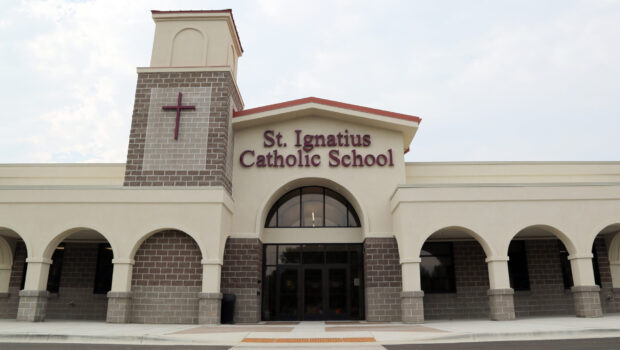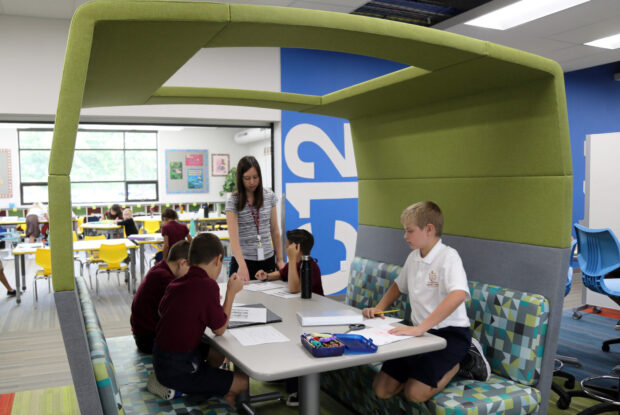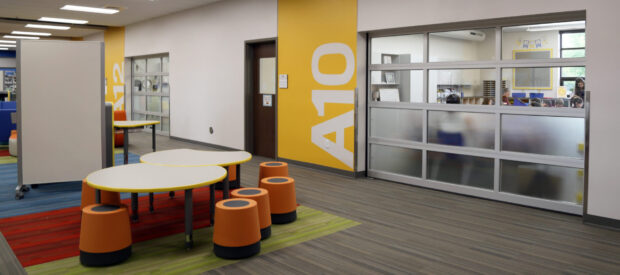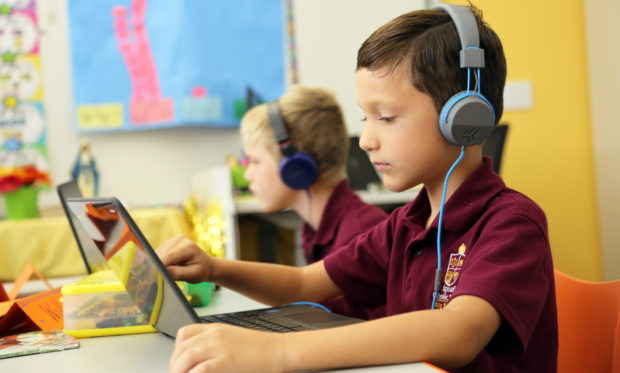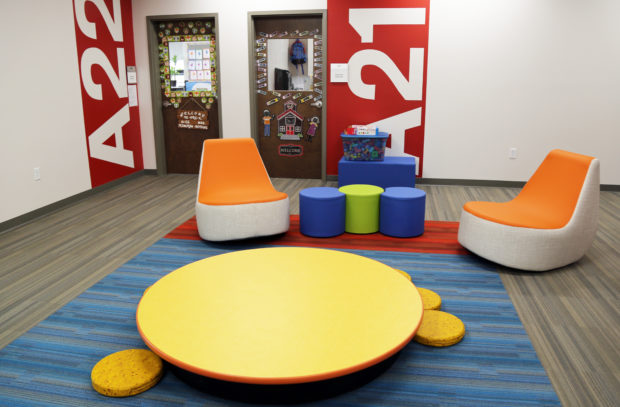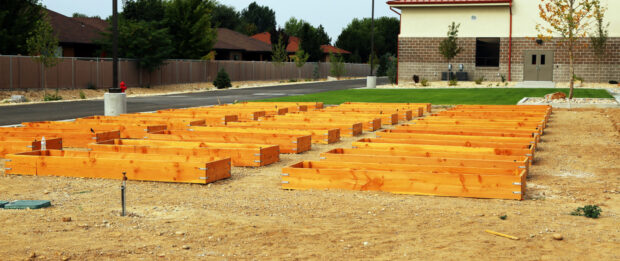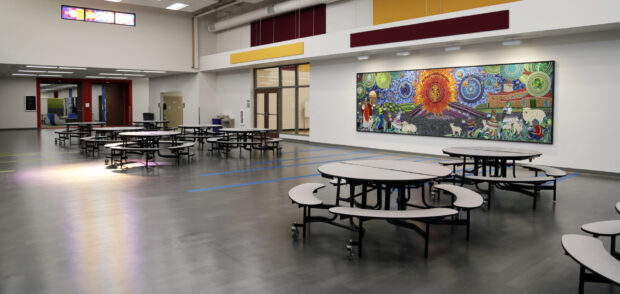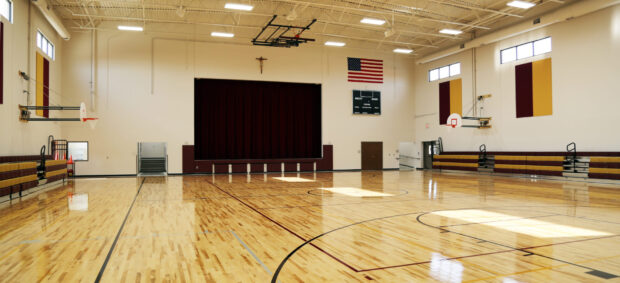Meridian — What if you were given the chance to create and design a brand-new school? Where would you begin?
Andi Kane, the principal at St. Ignatius Catholic School, started that journey a year ago. She turned her dream school into a reality.
“It was too appealing to turn down,” Kane said. “This fits my personality because I like to create, problem solve and think outside the box.”
Kane previously worked in Spokane for eight years as an assistant principal at St. Aloysius Gonzaga Catholic School before moving to Idaho for her husband’s career.
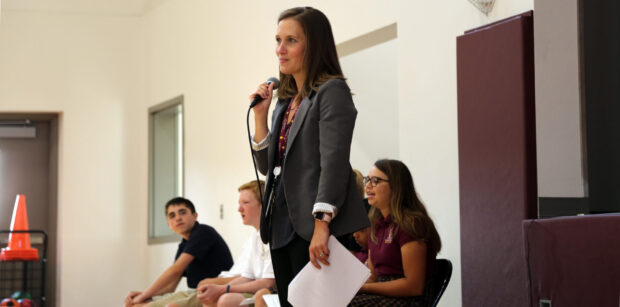
“I’m passionate about Catholic school because kids are successful and they’re supported at so many different levels,” she said.
For the past year, Kane conducted research with a group of 12 leaders from the Holy Apostles Catholic Church. The group traveled to schools from San Francisco to Seattle to study and talk with education experts on these teaching techniques:
- Inquiry-based learning
- Station-rotation, blended learning
- Individualized learning plans
- Flexible learning spaces
“We wanted to look at all the different options and then figure out what would be best for our community,” Kane said. “It was taking what was good and fusing it together.”
The school
St. Ignatius serves students in pre-K through eighth grade and is the Boise-area’s first new Catholic school in 50 years. The school is 55,000 square feet and located next to the Holy Apostles Catholic Church near the intersection of Meridian Road and Chinden Boulevard in Meridian. St. Ignatius is a project of the Holy Apostles Catholic Church, which is the largest Catholic parish in Idaho.
The school cost $12 million, which was raised by the Holy Apostles Catholic Church community and grants. Fundraising for the school started in 2016 and paid for $10.5 million in construction costs and $1.5 million for outdoor equipment, curriculum materials, technology and the library.
Student enrollment is at 410 kids with 25 students per classroom. There are two classes at each grade level. The maximum capacity is 490 students. The school staffs 43 people, including 23 educators.
The school features:
- 20 classrooms, each 900 square feet
- Flex learning and collaboration space
- Digital presentation room
- Library
- Gym
- Outdoor field that includes a track
- Music room
- Science lab
- Two maker space labs
- Two playgrounds
- Community garden
- Outdoor learning spaces
- Math room
Each classroom has a garage door that opens up into the hallway. The hallways are considered flexible-learning space, which is an open seating area where students can meet and work on projects together.
The learning process
You won’t find traditional desks and chairs lined up in rows in the classrooms. Each room has tables and chairs that can move around and be reconfigured for different setups. The purpose is for students to have a flexible learning environment.
“The leaders in catholic education want to see this new approach to education, but you also have the tradition,” Kane said. ” It’s taking the tradition and making it better.”
St. Ignatius’ academic model is an individualized learning plan based on faith, service and social justice.
“It’s good practice in education to have high individualization,” Kane said.
Teachers will focus on inquiry-based learning in science and STEAM (science, technology, engineering, arts and mathematics) instruction. Teachers also are piloting multi-age classrooms where two grade levels combine for instruction.
Each student in grades 4-8 has access to Google Chromebooks and Windows laptops. Students in kindergarten though third grade use Google Chromebooks and iPads in the classroom.
“Technology is key to our blended-learning piece,” Kane said. “You have to have the technology as part of our rotation.”
Annual enrollment is $4,000 for registered parishioners, $4,500 for those registered at another Catholic church in the area, and $5,500 for those who are not registered. Financial aid is available to families.

